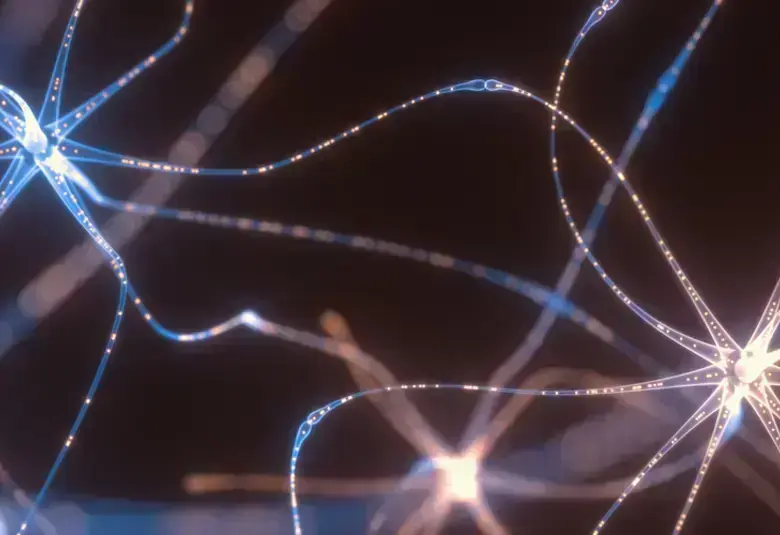Diagnosis of psychiatric disorders currently depends on clinical criteria. In the future the hope is that identification of appropriate biomarkers will enable earlier diagnosis and earlier treatment to improve outcomes for patients. This is particularly critical for schizophrenia to reduce illness severity and improve its course. At EPA2019, the latest research on identifying potential biomarkers in psychiatry was presented in a fascinating state-of-the-art symposium to a packed audience of psychiatrists.
현재 정신질환의 진단은 임상적 기준(clinical criteria)을 바탕으로 이루어집니다. 향후에는 적절한 바이오마커 확인으로 조기 진단 및 조기 치료가 가능해져 환자의 치료 결과를 개선할 수 있는 미래를 기대하고 있습니다. 조현병의 경우, 질환 중증도를 낮추고 진행 과정을 개선하기 위해서는 조기 진단과 치료가 특히 중요합니다. 최근 EPA 2019에서 열린 흥미로운 최신 의학 심포지엄에서는 회의장을 가득 채운 정신과 전문의 청중들을 대상으로 정신의학 분야에서의 잠재적 바이오마커 확인에 관한 최근 연구 결과가 소개되었습니다.
A biomarker is “a characteristic that is objectively measured and evaluated as an indicator of normal biological processes, pathological processes or pharmacological responses to an intervention,”1 explained Professor A Szulc, Medical University of Warsaw, Poland.
폴란드 바르샤바의대(Medical University of Warsaw)의 A. 슐츠(A. Szulc) 교수는 바이오마커를 정의하기를, “치료에 대한 정상적인 생물학적 과정, 병리학적 과정, 또는 중재(intervention)에 대한 약리학적 반응을 나타내는 지표로서 객관적으로 측정 및 평가되는 특징”1이라고 하였습니다.
Sterile inflammation of the brain is common and a potential cause of psychiatric disorders
뇌의 무균성 염증은 빈번하고 잠재적인 정신장애의 원인입니다
Potential immune system-related biomarkers
잠재적 면역 시스템 관련 바이오마커
Psychiatric disorders result from a combination of stress, environmental and genetic factors, said Professor Mariusz Ratajczak, Warsaw Medical University, Poland and James Brown Cancer Centre, Louisville, KY.
폴란드 바르샤바의대 및 미국 켄터키 루이스빌 제임스브라운 암센터(James Brown Cancer Centre)의 마리우시 라타이차크(Mariusz Ratajczak) 교수는 스트레스와 환경적·유전적 요인이 복합적으로 작용하여 정신질환을 야기한다고 말했습니다.
Inflammation-related abnormalities are common in patients with psychotic disorders, he explained, and these include:
라타이차크 교수에 따르면, 염증 관련 이상 증상은 정신질환 환자에게서 흔히 나타나는 현상이며, 다음과 같은 증상들을 포함합니다.
- elevated levels of circulating pro-inflammatory cytokines and chemokines
- increased numbers of circulating monocytes and neutrophils
- enhanced microglial, astrocyte and endothelial cell reactivity to pro-inflammatory signals2
- 염증 유도 사이토카인 및 케모카인의 순환량 증가
- 순환 단핵구 및 호중구 수 증가
- 염증 유도 신호에 대한 소교 세포, 성상 세포, 내피 세포의 반응성 증대2
Severe depression is also often comorbid with chronic inflammatory conditions, and patients with pre-existing inflammatory diseases are more susceptible to developing mood disorders than healthy individuals.
심각한 우울증은 주로 만성 염증 질환을 동반하며, 기존에 염증성 질환을 앓고 있던 환자라면 건강한 사람에 비해 기분 장애가 발병할 가능성이 높습니다.
These findings indicate a cross-talk between the innate and adaptive immune systems, explained at least partially by co-evolution of the systems, Professor Ratajczak said.2 He suggested that sterile inflammation of the brain due to activation of innate immunity — a common event triggered by physical, chemical or metabolic damage but not microbial infection — is a cause of psychiatric disorders. Complement cascade cleavage products (C3a and C5a) are new markers of sterile inflammation in the brain, he added.
라타이차크 교수는 이러한 연구 결과는 선천적 면역 체계와 후천적 면역 체계의 상호 작용(Cross-talk)을 의미하며, 최소한 부분적으로나마 두 체계의 공진화(co-evolution)로 설명될 수 있는 것이라고 말했습니다.2 라타이차크 교수는 선천적 면역력의 활성화로 인해 발생하는 뇌의 무균성 염증은 세균 감염이 아닌 신체적, 화학적 또는 대사적 손상으로 인해 야기되는 흔한 현상으로서 정신질환의 원인 중 하나라고 설명했습니다. 보체 관련 연쇄반응의 최종산물(complement cascade cleavage products, C3a and C5a)이 뇌 무균성 염증의 새로운 마커라고 덧붙였습니다.
Professor Ratajczak also highlighted the role of microglia (which account for 10–15% of all cells in the brain) as an extension of cellular immunity in the brain. As key cells in brain maintenance, microglia are extremely sensitive to even small pathological changes.
또한 라타이차크 교수는 뇌 세포 면역력의 확장으로서 소교 세포의 역할에 주목했습니다(소교 세포는 뇌의 모든 세포 중 10~15%를 차지합니다). 소교 세포는 뇌를 유지하는 핵심 세포로서 미미한 병리학적 변화에도 극도로 민감하게 반응합니다.
“Sterile inflammation of the brain due to activation of innate immunity — a common event triggered by physical, chemical or metabolic damage but not microbial infection — is a cause of psychiatric disorders” Professor Ratajczak
라타이차크 교수는 “선천적 면역력의 활성화로 인해 발생하는 뇌의 무균성 염증은 세균 감염이 아닌 신체적, 화학적 또는 신진대사적 손상으로 인해 야기되는 흔한 현상으로서 정신질환의 원인 중 하나”라고 설명했습니다
Other key players in the pathological process include changes in the release of danger-associated molecular pattern molecules (DAMPs) with aberrant ATP-mediated purinergic signalling and activation of the complement and coagulation cascade in the sterile inflammation. In contrast, the inflammation-limiting effects exerted by heme oxygenase-1 (HO-1) have beneficial effects in inflammatory processes.2
병리학적 과정에서의 또 다른 핵심 요인은 위험 연관 분자 패턴(DAMPs) 분자들 방출의 변화, 그리고 이에 동반되는 비정상적 ATP에 의해 매개되는 푸린성 신호전달과 무균성 염증에서의 보체 및 응고 연쇄반응의 활성화입니다.
반면, 힘옥시게나아제-1(HO-1)로 인해 발생하는 염증 제한 효과는 염증 발현 과정에서 유익한 영향을 줍니다.2
The brain morphometric person-based similarity index
뇌 형태 계측을 위한 ‘사람 기반 유사성 지표’
The heterogeneity of psychiatric disorders presents many challenges in diagnosis and treatment, but patient stratification is required to enable precision or personalised psychiatry, said Professor Sophia Frangou, Icahn School of Medicine, Mount Sinai, NY.
미국 뉴욕 마운트시나이 아이칸의대(Icahn School of Medicine, Mount Sinai)의 소피아 프란고우(Sophia Frangou) 교수는 정신질환의 이질성(heterogeneity)으로 인해 진단과 치료에서 많은 어려움에 직면하게 되지만, 정밀한 개별 맞춤형 정신의학을 위해서는 환자 계층화가 필요하다고 말했습니다.
The heterogeneity of psychiatric disorders presents many challenges in diagnosis and treatment, but patient stratification is required to enable precision or personalised psychiatry
정신질환의 이질성으로 인해 진단과 치료에서 많은 어려움에 직면하게 되지만, 정밀한 개별 맞춤형 정신의학을 위해서는 환자 계층화가 필요합니다.
In an attempt to stratify patients with schizophrenia, Professor Frangou and her team have used a person-based similarity index (PBSI) — an individual person’s brain structural profile that considers all relevant morphometric measures as features of a single vector.3 They have found:
프란고우 교수와 연구진은 조현병 환자 계층화를 위한 시도로서 ‘사람 기반 유사성 지표’(PBSI, person-based similarity index)를 활용했습니다. PBSI 지표는 개인별 뇌 구조 프로파일을 정량화하기 위한 것으로서, 단일 질환 매개체와 관련된 모든 형태적 계측 기준들을 고려합니다.3 프란고우 교수와 연구진은 다음과 같은 연구 결과를 얻었습니다.
- measures of global structural variability, suggesting that patient heterogeneity lies in cortical regions; and
- measures of regional structural variability, implicating the middle frontal gyrus involved in executive functions and cognitive control, and middle temporal gyrus, involved in language processing and memory.
- 뇌 전반의 구조적 가변성에 관한 계측 - 환자별 이질성이 외피 영역에 존재함을 시사
- 뇌 영역별 구조적 가변성에 관한 계측 - 중전두회는 실행 기능과 인지 제어와 관련이 있으며, 중측두회는 언어 처리 및 기억력과 관련이 있음을 시사
Genetic markers are unlikely to be helpful
유전적 마커의 낮은 유용성
DSM diagnoses encompass heterogeneous clinical descriptions and cannot yet be guided by biological data, said Professor Jerzy Samochowiec, Pomeranian Medical University, Szczecin, Poland. He described the complex genetics of psychiatric disorders and suggested that any single genetic variant is unlikely to be useful in enabling diagnosis; because it appears that many genes are exerting a small effect on risk.
폴란드 슈체친 포메라니아의대(Pomeranian Medical University)의 예지 사모호비에츠(Jerzy Samochowiec) 교수는 DSM 진단은 다양한 임상적 형태들을 포함하지만, 아직 생물학적 데이터를 바탕으로 설명되지는 않는다고 말했습니다. 사모호비에츠 교수는 정신질환의 복합적 유전학에 대해 설명하면서, 수많은 유전자가 질환을 유발하는 데 각각 작은 영향만을 미치므로 어떠한 단일 유전변이도 진단에 그리 유용하게 활용되지 않을 것이라고 말했습니다.
본 자료는 Global Lundbeck 의학부에서 선별한 콘텐츠이며, 한국룬드벡의 의견과 다를 수 있습니다




